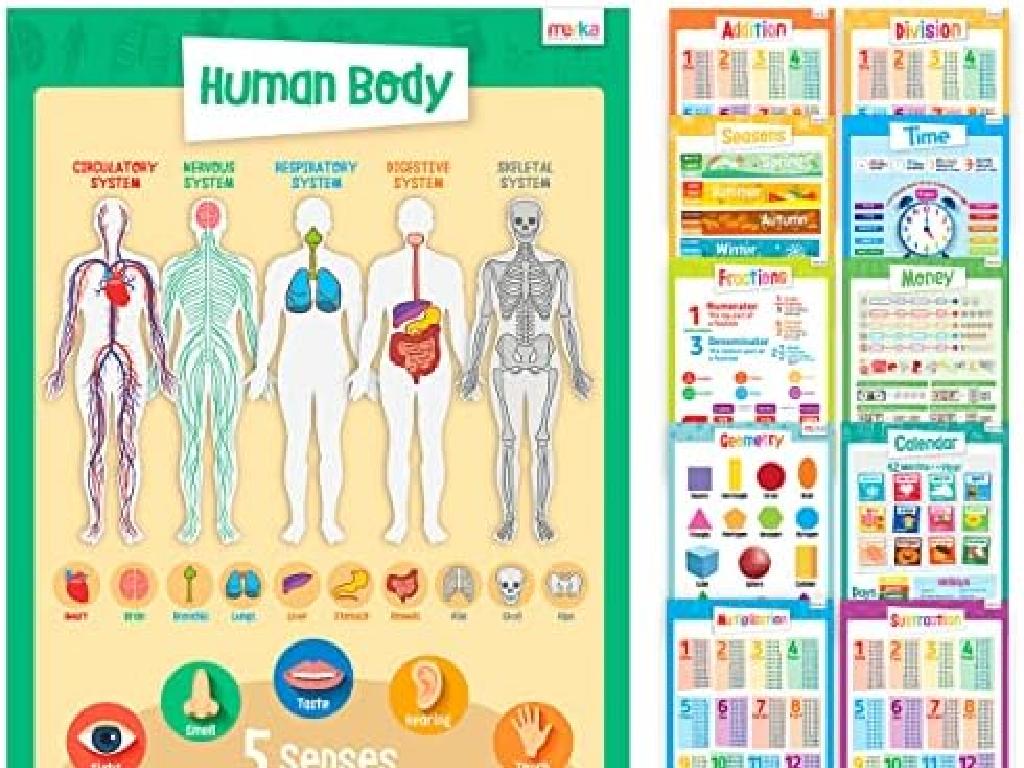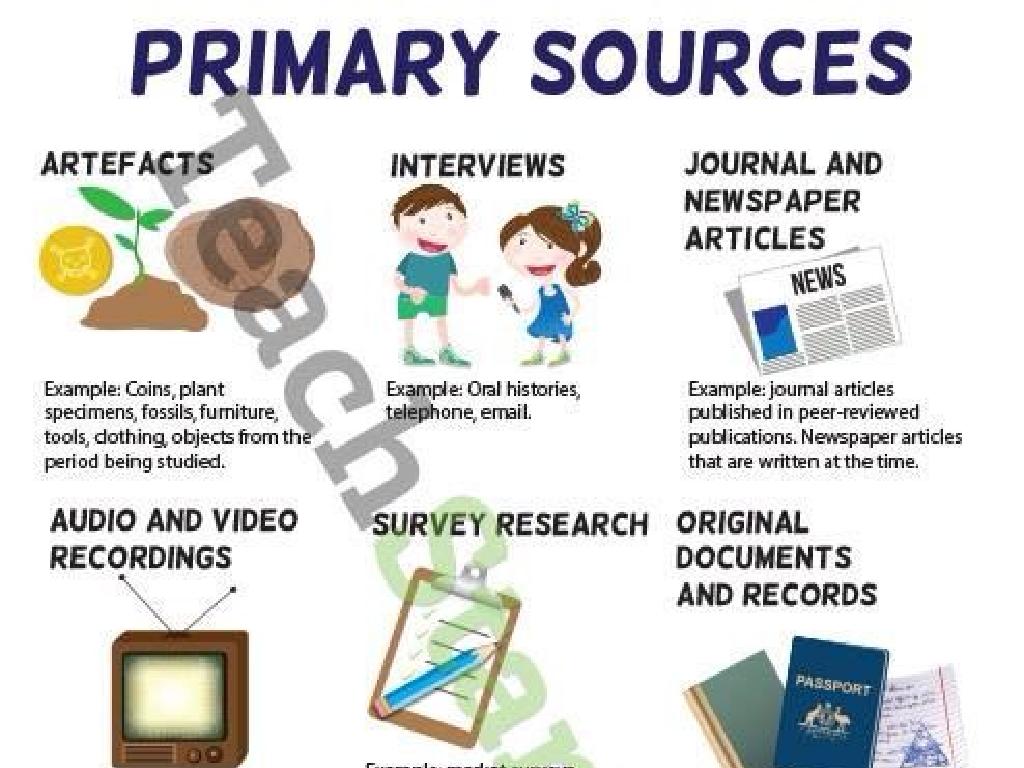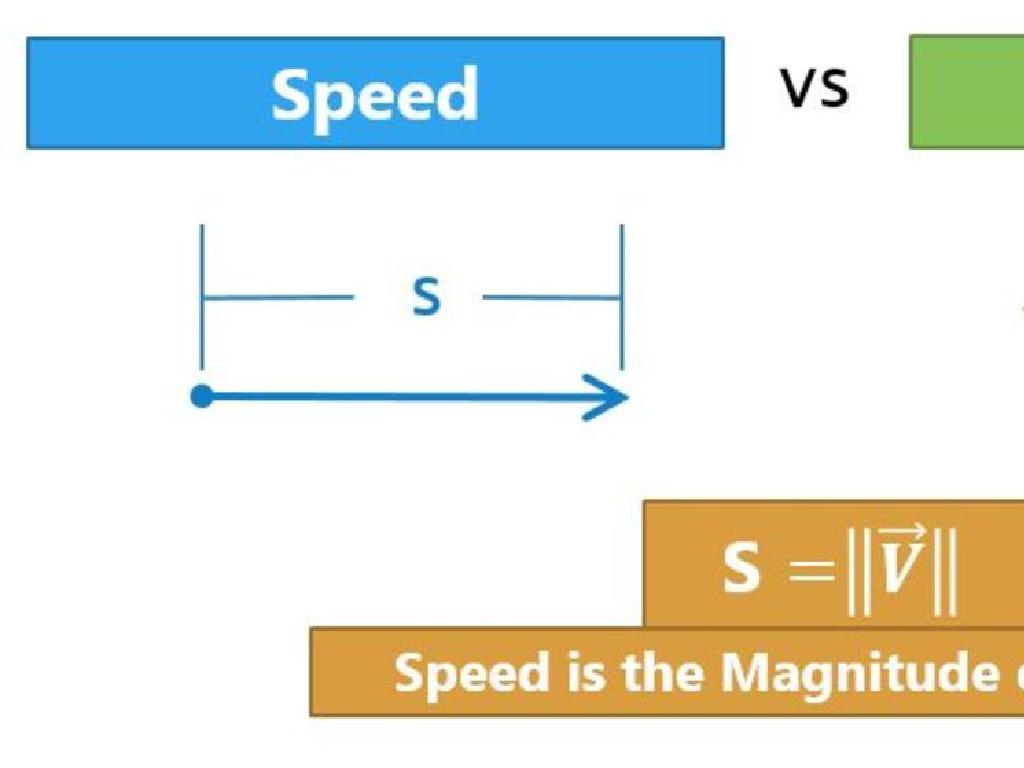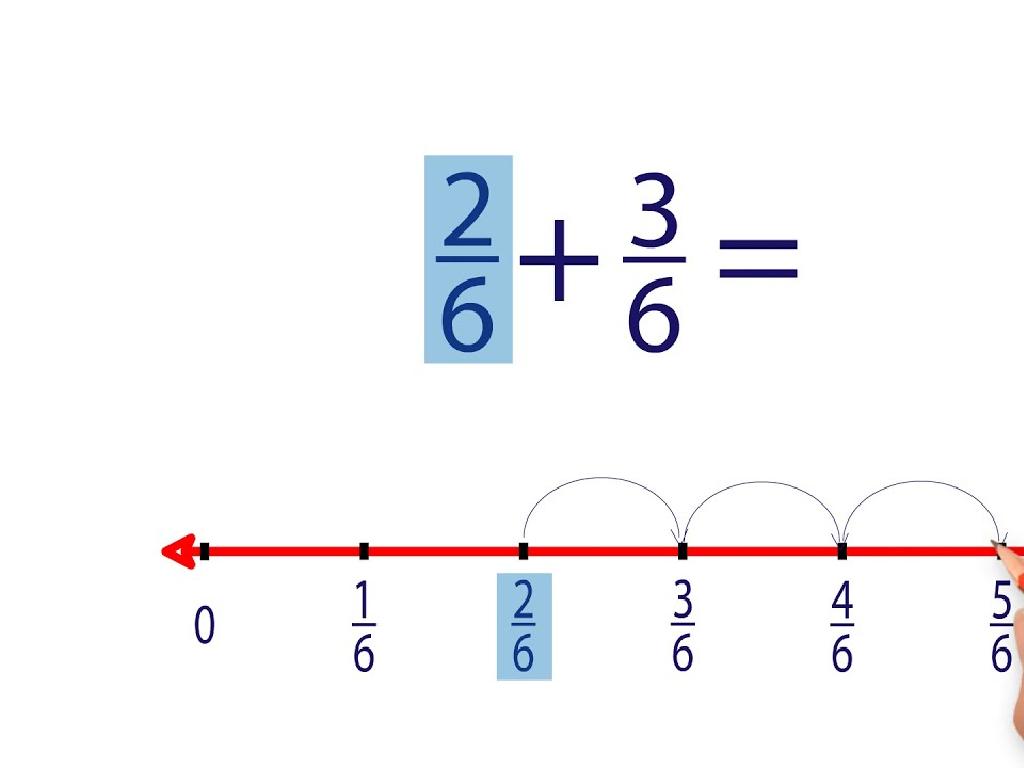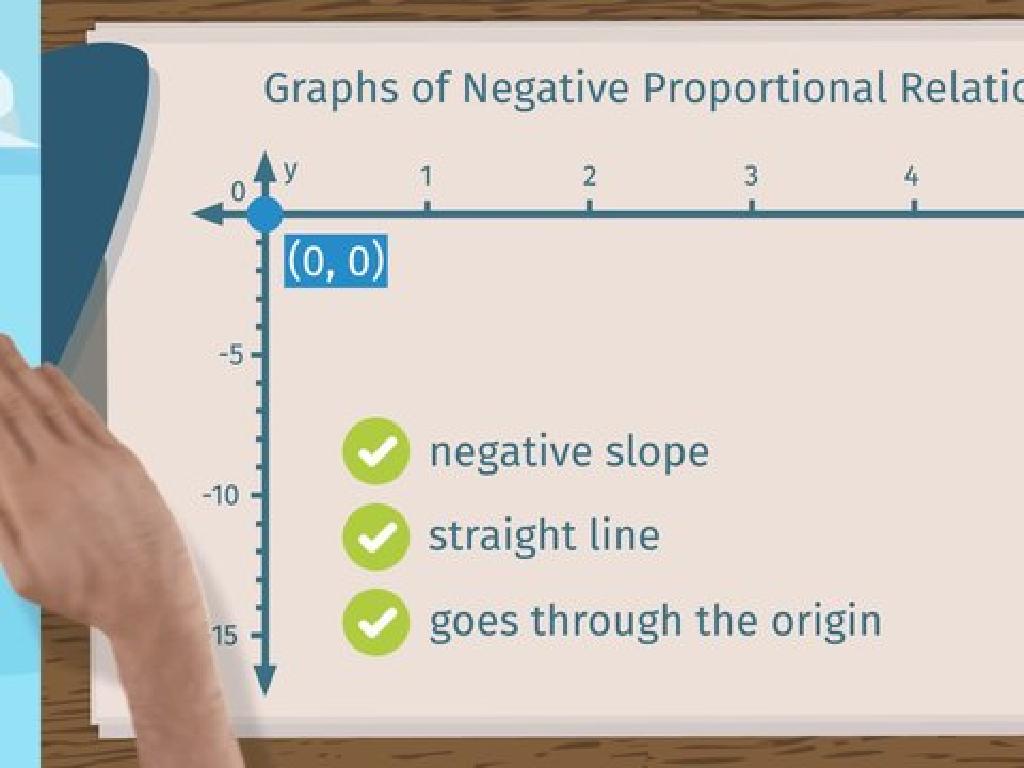Compare Temperatures On Thermometers
Subject: Science
Grade: Fourth grade
Topic: Weather And Climate
Please LOG IN to download the presentation. Access is available to registered users only.
View More Content
Introduction to Temperature
– Understanding temperature
– Temperature measures how hot or cold something is.
– Significance of temperature
– Temperature affects weather, clothing choices, and daily activities.
– Measuring temperature
– We use thermometers to measure temperature in degrees.
– Thermometer usage
– Learn to read temperatures on different thermometers.
|
Begin the lesson by explaining that temperature is a measure of how hot or cold something is, which can be felt but not seen. Discuss why temperature is important, as it influences many aspects of our lives, including the weather, what we wear, and activities we can do. Introduce the thermometer as a tool for measuring temperature and explain that it can show temperature in degrees Fahrenheit or Celsius. Emphasize the practical skill of reading temperatures from different types of thermometers. Plan to demonstrate how to use a thermometer and read the scale, and prepare to have students practice with examples.
Understanding Thermometers
– Different types of thermometers
– Digital, mercury, and infrared thermometers
– Key parts of a thermometer
– Bulb, scale, and liquid inside the thermometer
– Reading a thermometer correctly
– Look where the liquid ends on the scale to read
– Practice comparing temperatures
– Use real-life examples to compare temperatures
|
This slide introduces students to the concept of measuring temperature using thermometers. Start by explaining the various types of thermometers available, such as digital, mercury, and infrared, and discuss where and how they are commonly used. Move on to the parts of a thermometer, highlighting the bulb that holds the temperature-sensitive liquid, the scale that shows the temperature units, and the liquid itself that rises or falls with temperature changes. Teach students how to read a thermometer by looking at where the liquid ends on the scale. Finally, engage the class with an activity where they compare temperatures from different thermometers or situations, such as indoors versus outdoors, morning versus afternoon, or in sunlight versus shade. This practical application will help solidify their understanding of how to read and compare temperatures.
Understanding Temperature Units
– Fahrenheit vs. Celsius
– Fahrenheit (°F) used in the U.S., Celsius (°C) used in other countries.
– When to use each unit
– Use °F for local weather, °C for science experiments.
– Converting temperatures
– To convert °C to °F: Multiply by 9, divide by 5, then add 32.
– Practice with examples
– Let’s convert 0°C to °F and 32°F to °C together!
|
This slide introduces students to the two most commonly used temperature units: Fahrenheit and Celsius. Explain that Fahrenheit is primarily used in the United States for everyday temperature readings, while Celsius is used in most other countries and for scientific purposes. Teach students the formulas for converting between Fahrenheit and Celsius: (°C to °F: Multiply by 9, divide by 5, then add 32) and (°F to °C: Subtract 32, multiply by 5, then divide by 9). Provide examples and practice problems for the class to work through together, such as converting room temperature or body temperature between units. Encourage students to ask questions and assist each other with conversions.
Comparing Temperatures
– Understanding temperature comparison
– Comparing temperatures means looking at how hot or cold different things are.
– How to identify temperature differences
– Use a thermometer to see the exact difference in degrees between two temperatures.
– Examples of comparing temperatures
– Comparing weather in different cities or measuring water temperature for a science experiment.
|
This slide introduces the concept of comparing temperatures, which is a fundamental aspect of understanding weather and climate. Start by explaining that comparing temperatures helps us understand how hot or cold something is relative to something else. Show students how to read temperatures on different thermometers and calculate the difference in degrees. Use relatable examples, such as comparing the temperature in their hometown with that of another city, or measuring the temperature of water before and after heating. This will help them grasp the concept of temperature comparison in a practical way. Encourage students to think of other situations where they might need to compare temperatures.
Temperature’s Role in Weather and Climate
– How temperature shapes weather
– Temperature influences rain, wind, and storms.
– World’s various climate zones
– Tropical, temperate, and polar zones have distinct temperatures.
– Daily patterns of temperature
– Morning is cooler, and noon is warmer.
– Observing temperature changes
|
This slide introduces students to the concept that temperature is a key factor in determining weather patterns and climate zones. Begin by explaining how temperature interacts with other elements like humidity and pressure to create different weather conditions, such as rain or sunshine. Discuss the three main climate zones: tropical, temperate, and polar, and how their unique temperature ranges define them. Highlight the daily temperature cycle, with cooler mornings and warmer afternoons, and encourage students to observe and record these patterns. Use this opportunity to explain how thermometers work and how to read them. This will help students understand the practical aspects of temperature measurement in daily life and in the study of weather and climate.
Let’s Measure the Temperature!
– Class activity: Reading thermometers
– Work in pairs to compare readings
– Take turns reading and ensure both agree on the temperature shown.
– Discuss temperature differences
– Is it warmer or cooler? What’s the difference in degrees?
– Reflect on today vs. yesterday’s temperature
– Think about how the weather feels different from one day to the next.
|
This hands-on activity is designed to engage students in learning how to read thermometers and understand temperature variations. Students will work in pairs to practice reading thermometers, ensuring collaborative learning and accuracy in their readings. After comparing their results, they will discuss as a class how the temperature today differs from yesterday’s, promoting observational skills and critical thinking about weather patterns. Teachers should prepare a set of thermometers, ensure students understand how to read them, and facilitate discussions. Possible activities include comparing indoor and outdoor temperatures, measuring the temperature of different surfaces, or tracking the temperature at different times of the day.
Class Activity: Temperature Hunt
– Find temperatures around school
– Record your temperature findings
– Use a thermometer to measure different spots
– Compare temperatures you found
– How do these temperatures differ and why?
– Share discoveries with the class
– Discuss what you learned about temperature
|
This interactive activity is designed to help students apply their knowledge of reading thermometers in a practical setting. Provide each student or group with a thermometer and a worksheet to record the temperatures they find in various locations around the school, such as the playground, cafeteria, library, and classroom. Encourage them to note the time and location of each reading. Back in the classroom, have students compare their findings and discuss factors that might affect temperature differences, such as sunlight, air conditioning, or the presence of windows. This will help them understand how temperature can vary in different environments and the factors that influence it. Conclude the activity with a discussion where students can share their discoveries and reflect on what they’ve learned about temperature variation.
Wrapping Up: Temperature Comparisons
– Recap: What is temperature?
– Thermometers measure warmth
– A tool showing how hot or cold it is
– Comparing temps is insightful
– Helps us understand weather patterns
– Prep for tomorrow’s weather talk
– Think about how weather affects daily life
|
As we conclude today’s lesson, we’ll review the key concepts of temperature and thermometers. Temperature is a measure of how hot or cold something is, and thermometers are the tools we use to measure it. Understanding how to read thermometers and compare temperatures is crucial for grasping weather patterns and preparing for what to wear or activities to plan. For tomorrow, students should think about how different weather conditions affect their choices in clothing and activities, which will lead into our discussion on weather prediction and preparation.

